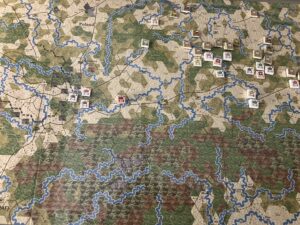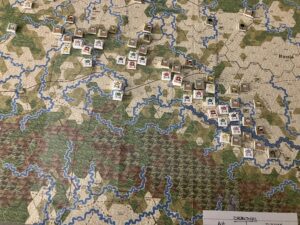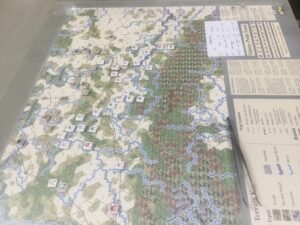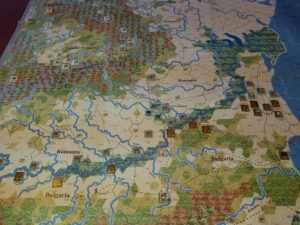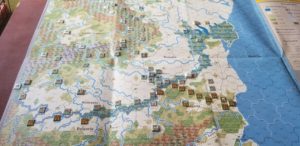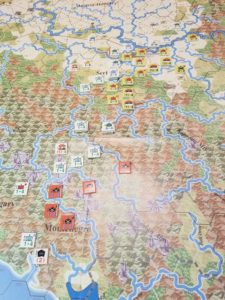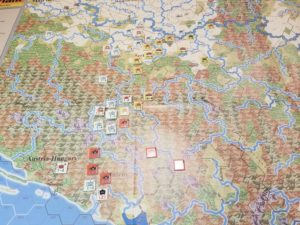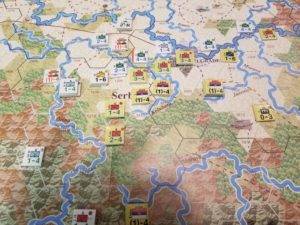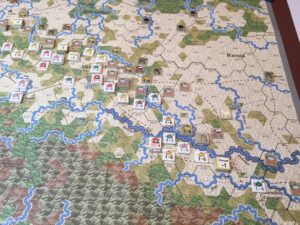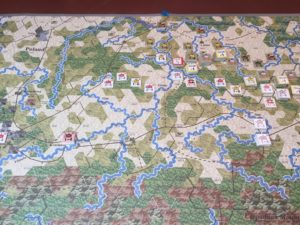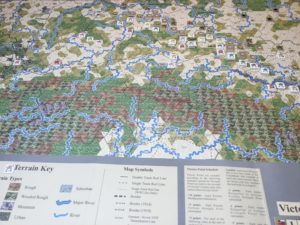Grinding away at Galacia: The Forgotten Cauldron.
Taking a “historical” approach, with both sides aggressively attacking, with little finesse. At this point, the Russians are the most successful aggressors. Their successes were helped by the requirement that Austro-Hungarian units must attack early in the game. These attacks had limited success, but with heavy loss.
One tactic has emerged in this session. The Der Weltkrieg rule set calls for mandatory retreats if losses represent one-half of a combat force. In this particular scenario, the threshold is reduced to one-third.
The operational area has a wide frontage, so most stacks are in the 12-16 (3-4 divisions) factor range, with 8 factor stacks often used to plug gaps. A two hex attack can typically generate a 3-4 factor loss, which not only attrits the defenders, but also forces a retreat. The Russians have been very successful at this, albeit aided by some favorable d6 rolls.
In attempt to avoid the odd angle/glare influenced photo in my recent game report, I tried shooting these in half-light. Further explanation is senseless.
This is the Austro-Hungarian (white counters, with some Germans in gray) left flank. Russian progress is limited.
Not so on the center/ right flank, where the A-H right (bottom right of photo) is under some real pressure.
Interesting game, and I’m now fairly fluent with the rules.
